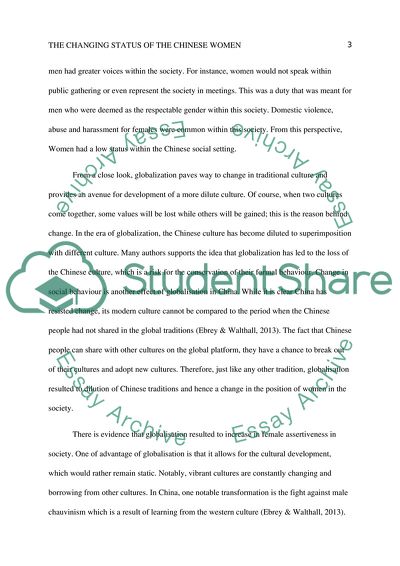Cite this document
(The Changing Status of the Chinese Women in Modern Times Essay Example | Topics and Well Written Essays - 2000 words, n.d.)
The Changing Status of the Chinese Women in Modern Times Essay Example | Topics and Well Written Essays - 2000 words. https://studentshare.org/gender-sexual-studies/1867938-the-changing-status-of-chinese-women-in-modern-times
The Changing Status of the Chinese Women in Modern Times Essay Example | Topics and Well Written Essays - 2000 words. https://studentshare.org/gender-sexual-studies/1867938-the-changing-status-of-chinese-women-in-modern-times
(The Changing Status of the Chinese Women in Modern Times Essay Example | Topics and Well Written Essays - 2000 Words)
The Changing Status of the Chinese Women in Modern Times Essay Example | Topics and Well Written Essays - 2000 Words. https://studentshare.org/gender-sexual-studies/1867938-the-changing-status-of-chinese-women-in-modern-times.
The Changing Status of the Chinese Women in Modern Times Essay Example | Topics and Well Written Essays - 2000 Words. https://studentshare.org/gender-sexual-studies/1867938-the-changing-status-of-chinese-women-in-modern-times.
“The Changing Status of the Chinese Women in Modern Times Essay Example | Topics and Well Written Essays - 2000 Words”. https://studentshare.org/gender-sexual-studies/1867938-the-changing-status-of-chinese-women-in-modern-times.


